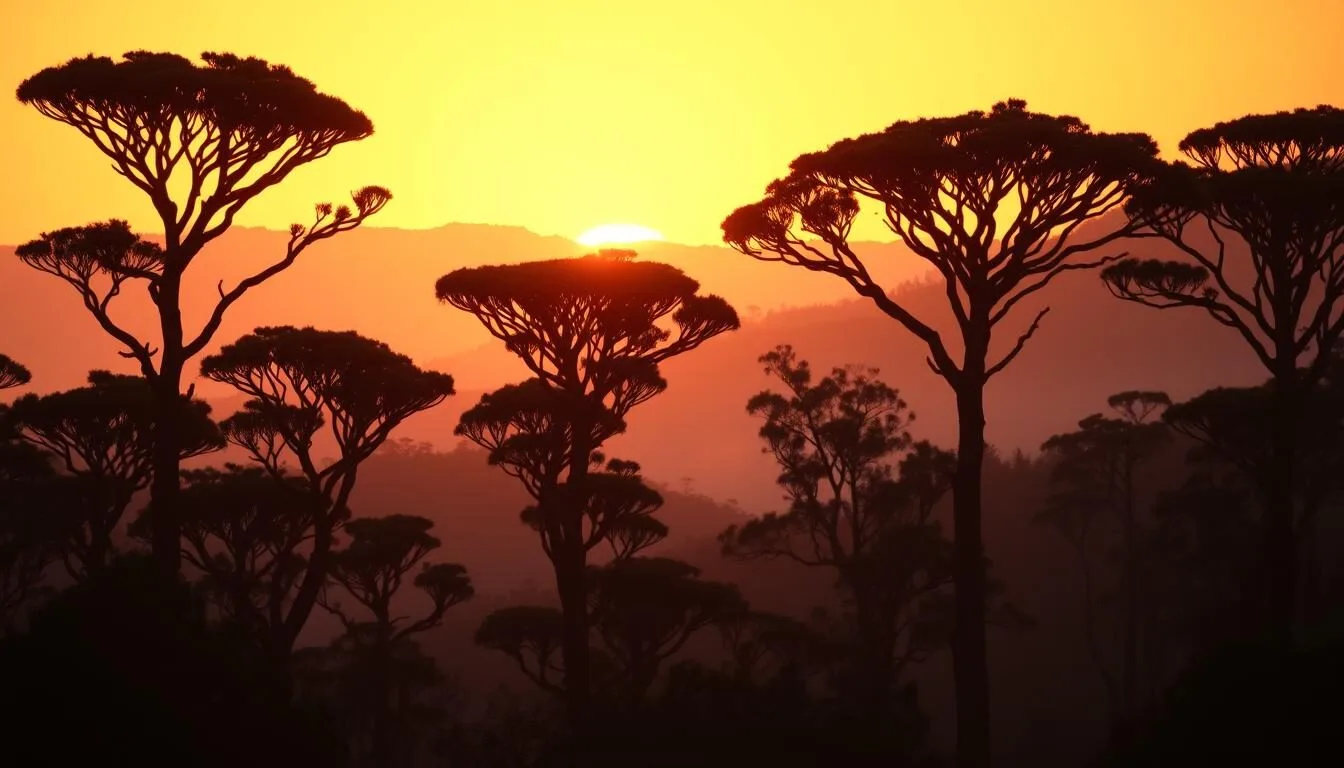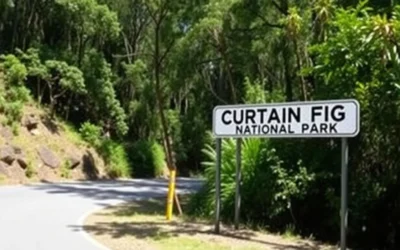Home to the world’s largest stand of ancient bunya pines – majestic trees that have stood since prehistoric times – Bunya Mountains National Park offers a rare glimpse into Australia’s primeval past. As Queensland’s second-oldest national park (established in 1908), this highland wilderness rises 1,100 meters above sea level, creating a cool mountain escape that feels worlds away from the coastal regions just a few hours’ drive away.
Getting There & Planning Your Journey
Bunya Mountains National Park is nestled in southeast Queensland, approximately 3 hours from Brisbane and 4 hours from the Sunshine Coast. The park is accessible via several steep, winding routes that make up the Great Bunya Drive – a scenic 390 km route stretching between Toowoomba and Gympie.
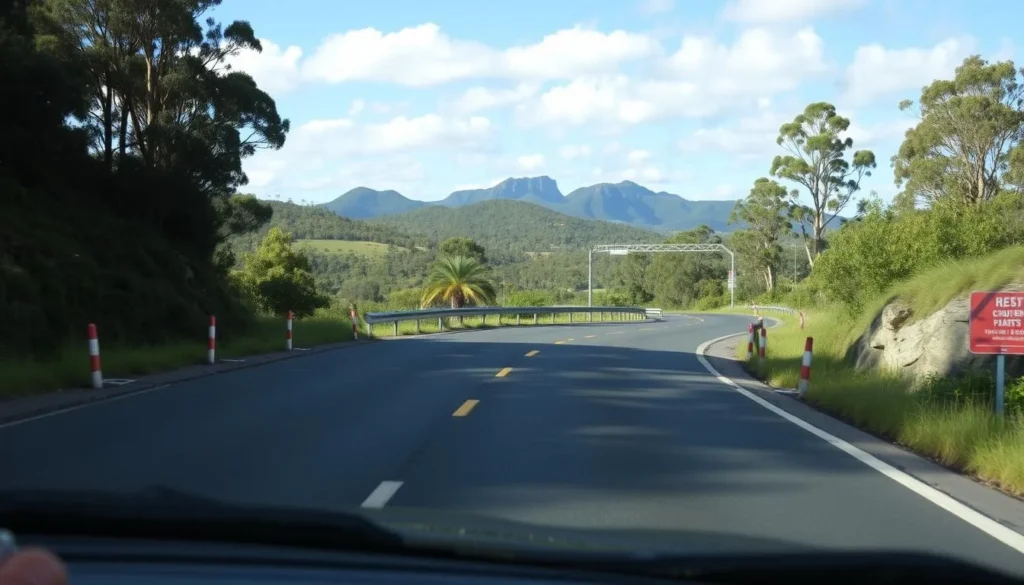
The Department of Transport and Main Roads advises that access roads are unsuitable for long or heavy vehicles. Exercise caution if traveling with caravans, large motorhomes, or buses. No fuel is available on the mountain, so fill up before your ascent.
Ready to Start Your Adventure?
Find the best flight options to Queensland for your Bunya Mountains expedition.
Best Time to Visit & Weather Tips
The Bunya Mountains experience a unique alpine climate that differs significantly from coastal Queensland. At 1,100 meters elevation, temperatures are cooler year-round, with distinct seasonal variations.
Winter (June-August)
Winter brings crisp, cool days (10-15°C/50-59°F) and cold nights that can drop below freezing. This season is particularly popular for visitors seeking a cozy mountain retreat. Log cabins with fireplaces are in high demand, creating a European alpine atmosphere rarely found in Queensland.
Spring/Summer (September-February)
Spring and summer offer pleasant temperatures (18-25°C/64-77°F) with cool evenings. These seasons are ideal for camping and hiking, with longer daylight hours for exploring the park’s extensive trail network. Occasional afternoon thunderstorms are possible.
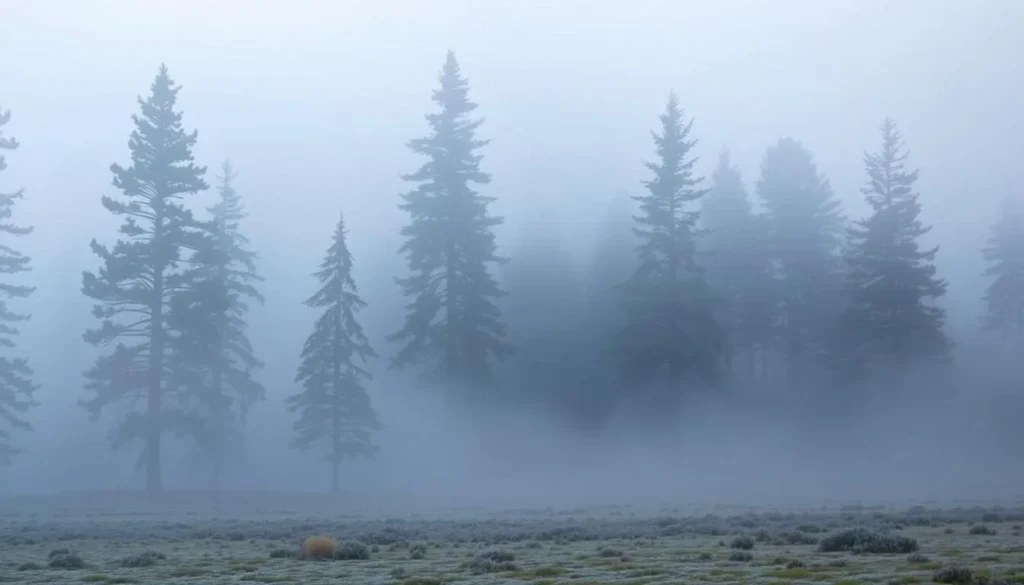
Weather Tip: Pack layers regardless of when you visit. Even in summer, evenings can be cool, and weather can change quickly in mountain environments. A waterproof jacket is recommended year-round.
Getting Around Locally
Once you’ve arrived at Bunya Mountains National Park, you’ll find that the area is compact enough to explore easily, though having your own vehicle is essential for accessing different sections of the park.
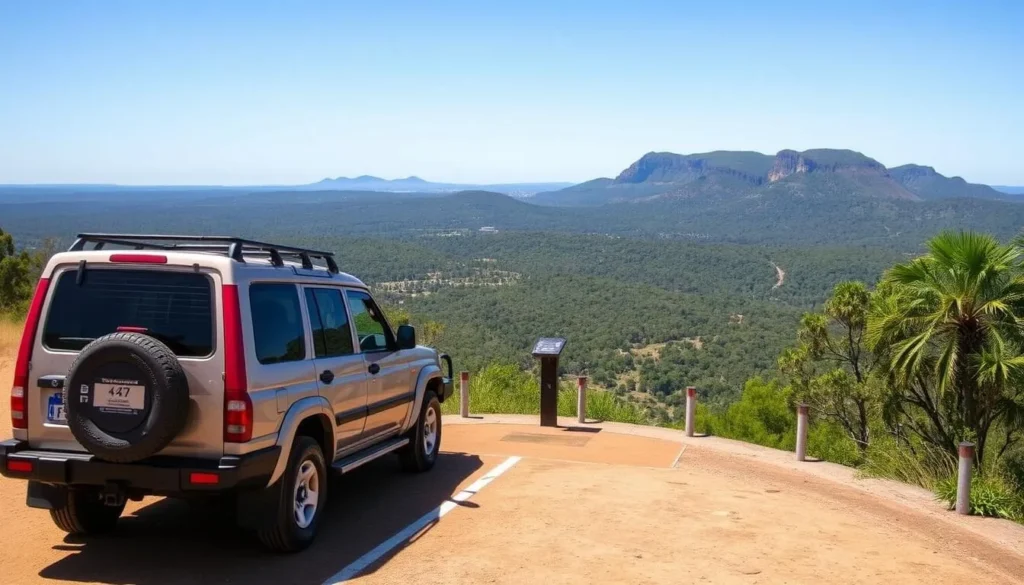
Explore at Your Own Pace
Rent a vehicle to discover all corners of Bunya Mountains National Park and the surrounding region.
Where to Stay
The Bunya Mountains offer several accommodation options to suit different preferences and budgets. From camping under the stars to cozy mountain cabins, you’ll find something to enhance your wilderness experience.
Camping
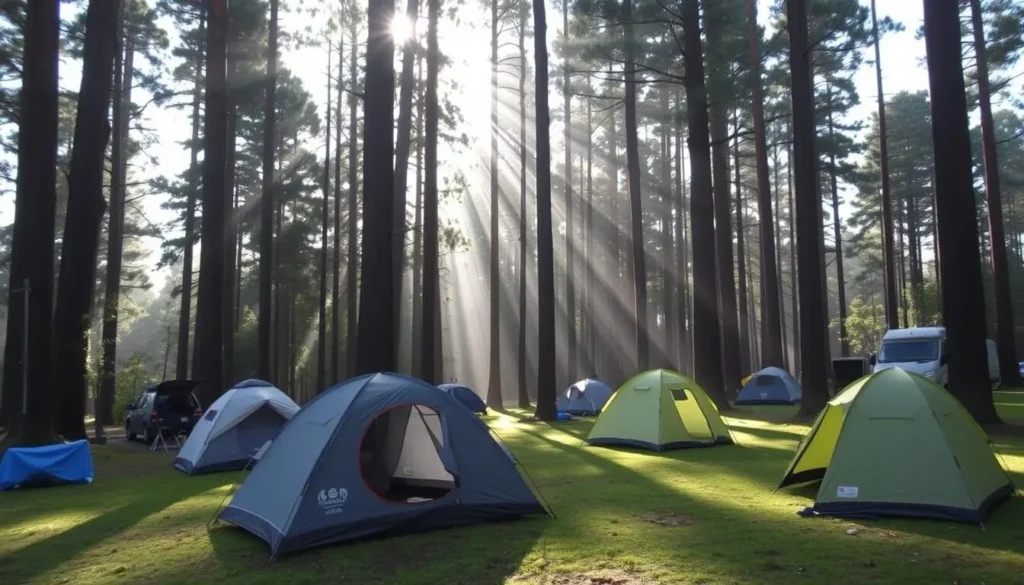
Three campgrounds operated by Queensland Parks offer budget-friendly options at just $7.25 per person per night (2025 rates). Pre-booking is essential, especially during peak periods.
- Dandabah: The largest and most developed site with hot showers and flush toilets.
- Westcott: A smaller, more secluded option with hybrid toilets.
- Burtons Well: Features some views and more tree coverage.
Cabins & Chalets

For those seeking more comfort, the park’s Swiss-style wooden cabins and chalets offer a delightful mountain retreat experience. Most feature fireplaces, making them especially popular during winter months.
Cabins range from basic to luxury options, with many accommodating families or groups. Most are located in or near the small Dandabah village area.
Nearby Options
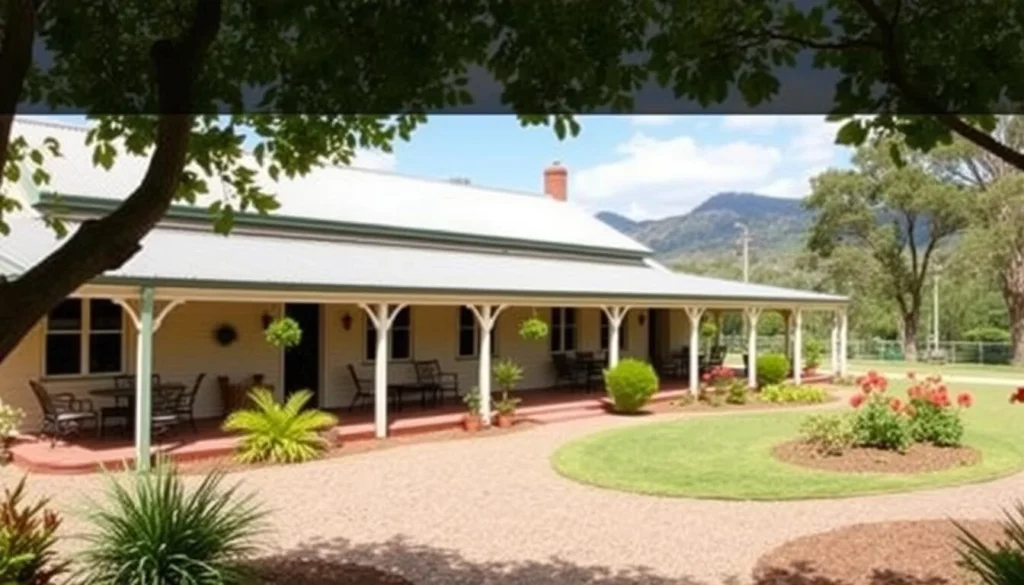
The surrounding towns of Kingaroy, Kumbia, and Dalby offer additional accommodation options if you prefer to day-trip to the mountains or if park accommodations are fully booked.
These range from country motels and B&Bs to farm stays that provide a different perspective on the region’s attractions.
Find Your Perfect Mountain Stay
Book your accommodation early to secure the best options, especially for winter weekends and holiday periods.
Dining & Local Cuisine
While dining options within the Bunya Mountains are limited, what’s available offers a taste of local flavors and the region’s unique culinary heritage.
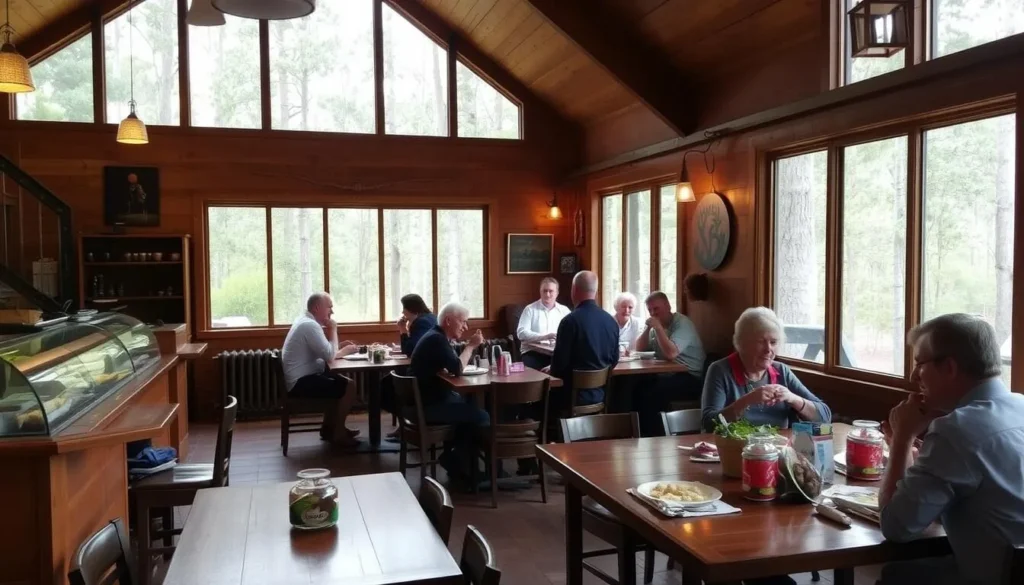
Bunya Nut Cuisine
The park’s namesake bunya nuts have been a prized food source for Aboriginal peoples for thousands of years. These large, starchy nuts were so valuable that traditional custodians would travel from hundreds of kilometers away to harvest them during bunya festivals.
Today, you can sample bunya nuts in various forms at the local cafe, including in breads, cakes, and savory dishes. Their flavor is often described as similar to chestnuts but with a unique character.
Dining Options
The small village at Dandabah offers a cafe and restaurant serving breakfast, lunch, and dinner. Menu options typically include Australian cafe classics alongside some specialty dishes featuring local ingredients.
For self-catering, bring supplies from larger towns before ascending the mountain, as shopping options are extremely limited. The campgrounds provide barbecue facilities, perfect for outdoor cooking.
“The bunya festivals were of immense cultural significance, bringing together Aboriginal groups from across vast distances for ceremonies that could last months. These gatherings were possibly Australia’s largest indigenous events.”
Attractions, Sightseeing & Activities
Bunya Mountains National Park offers a wealth of natural attractions and activities that showcase its unique ecosystem and stunning landscapes.
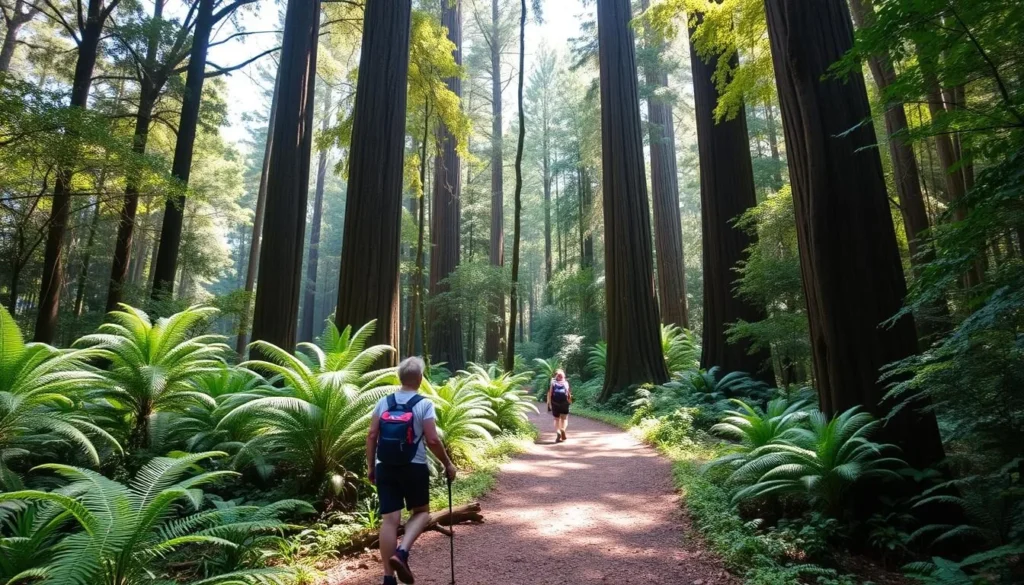
Walking Tracks
With over 35 km of walking tracks, hiking is the premier activity in the Bunya Mountains. Trails range from easy 500-meter strolls to challenging 20 km full-day adventures.
Mountain Biking
Recently completed mountain bike trails add another dimension to exploring the Bunya Mountains. The trail network includes four dedicated one-way loops and two dual-direction link trails, catering to riders of all experience levels.
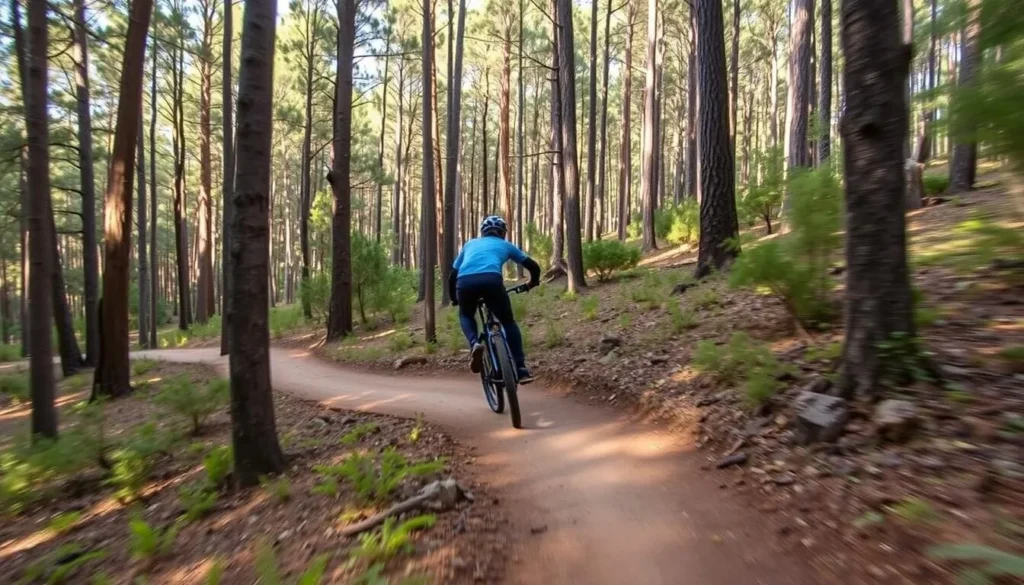
Wildlife Watching
The park is home to approximately 120 bird species and numerous mammals, reptiles, and amphibians. Wildlife watching opportunities abound, particularly at dawn and dusk.
Common Wildlife
- Red-necked wallabies (often seen around campgrounds)
- Brightly colored king parrots and crimson rosellas
- Kookaburras and bowerbirds
- Brushtail possums (active at night)
Rare Species
- Black-breasted button quail
- Sooty owls and powerful owls
- Several threatened mammal species
- Endemic skink species
Enhance Your Bunya Mountains Experience
Discover guided tours and activities that will help you make the most of your visit to this unique ecosystem.
Cultural Significance & History
The Bunya Mountains hold profound cultural significance for Aboriginal peoples, particularly the traditional custodians of the region. Understanding this rich cultural heritage adds depth to any visit.
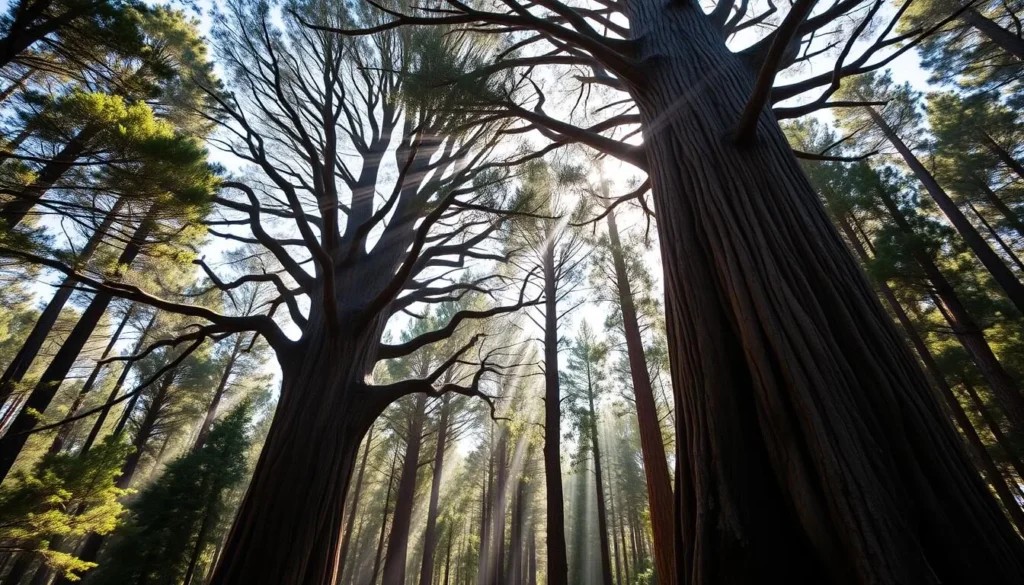
Bunya Gatherings
Every three years when the bunya pines produced abundant cones, Aboriginal groups from as far away as Charleville, the Sunshine Coast, and northern New South Wales would journey to the mountains for bunya festivals.
These gatherings were not merely for harvesting the nutritious nuts but served as important cultural, social, and ceremonial events. Groups would stay for weeks or months, sharing knowledge, performing ceremonies, arranging marriages, settling disputes, and trading.
“The bunya festivals represented one of Australia’s most significant regular gatherings of Aboriginal peoples, bringing together groups who might otherwise rarely interact, creating a rich tapestry of cultural exchange.”
European History
In 1908, Bunya Mountains became Queensland’s second national park, reflecting early recognition of its ecological importance. The park’s establishment helped preserve the world’s largest stand of bunya pines and the diverse ecosystems they support.
Historical logging operations targeted the valuable hoop pine but largely spared the bunya pines due to their cultural significance and the difficulty of working with their wood.
Practical Travel Tips
Make the most of your Bunya Mountains adventure with these essential tips and safety information.
Safety Considerations
Essential Packing
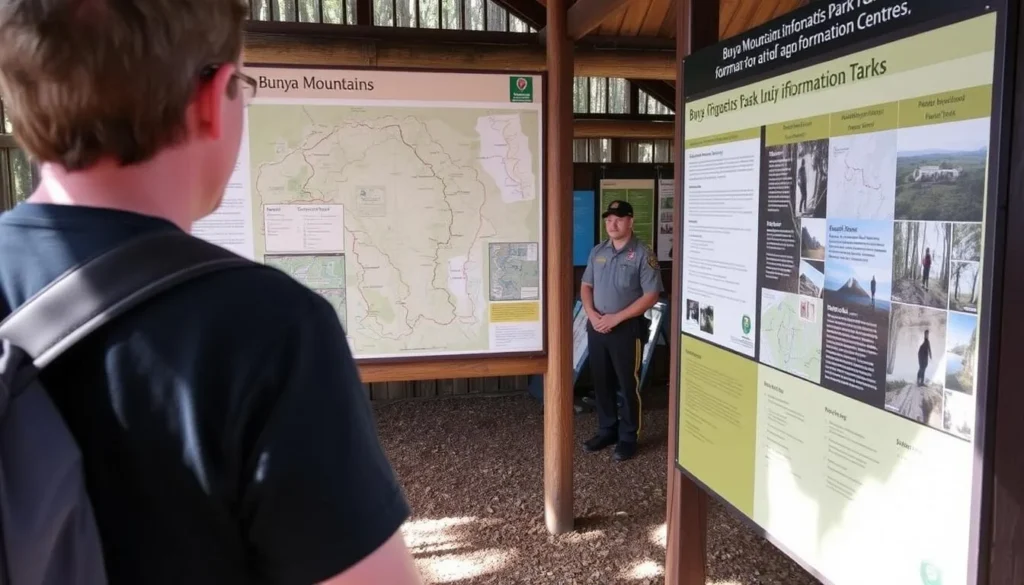
Important: No fuel is available on the mountain. Fill your vehicle before ascending, and bring all necessary supplies as shopping options are extremely limited.
Experience the Magic of Bunya Mountains
The Bunya Mountains offer a rare opportunity to step back in time and experience a landscape that has remained largely unchanged for millions of years. From the towering ancient bunya pines to the diverse wildlife and rich cultural heritage, this highland wilderness provides a unique Australian experience that feels worlds away from the coastal regions just hours away.
Whether you’re seeking adventure on the trails, a peaceful retreat in nature, or a deeper connection to the land’s ancient history, the Bunya Mountains welcome you to discover their timeless beauty. Pack your sense of wonder and prepare for an unforgettable journey into one of Queensland’s most precious natural treasures.
Ready for Your Bunya Mountains Adventure?
Start planning your journey to this ancient wilderness with our trusted travel partners.
The above is subject to change.
Check back often to TRAVEL.COM for the latest travel tips and deals.
